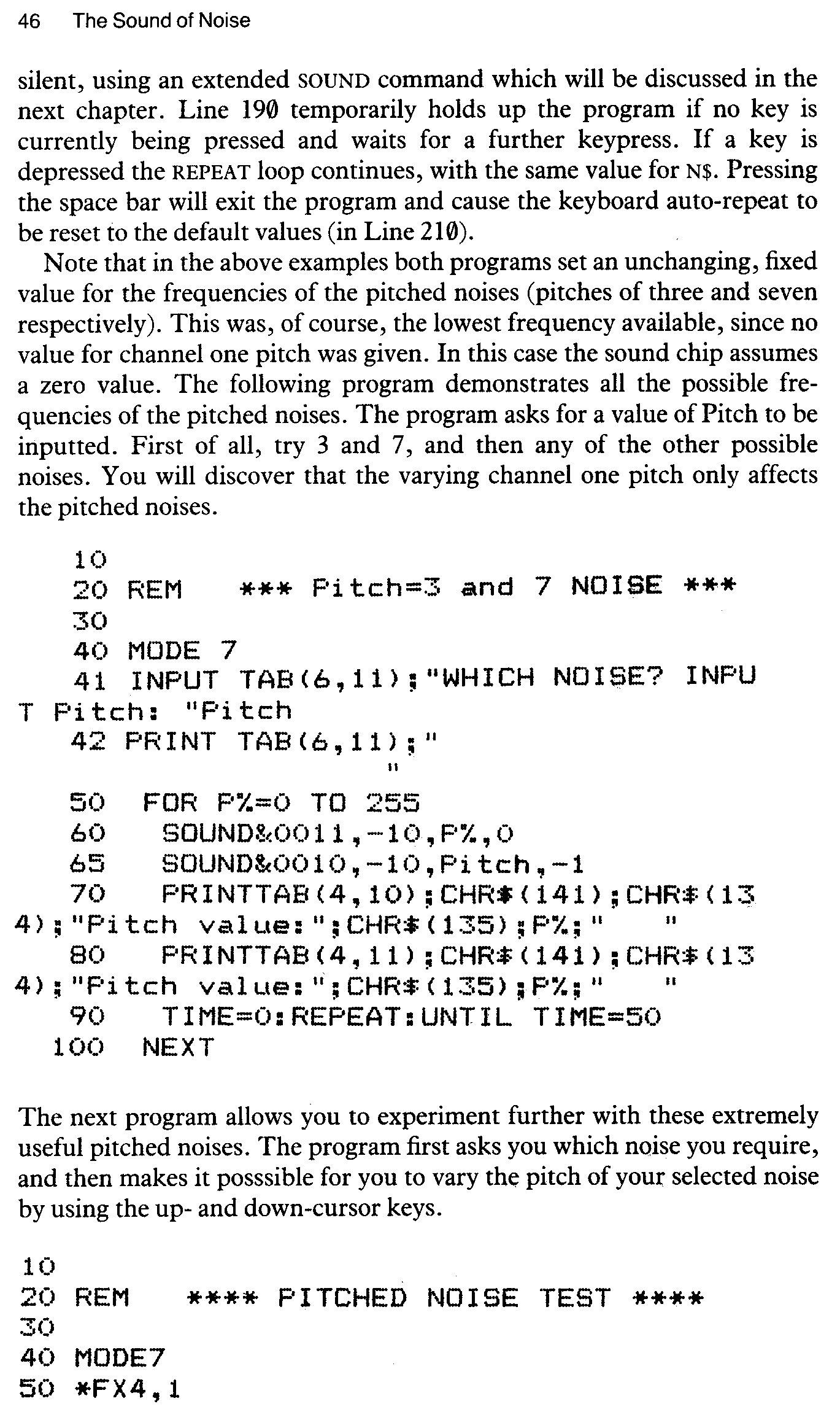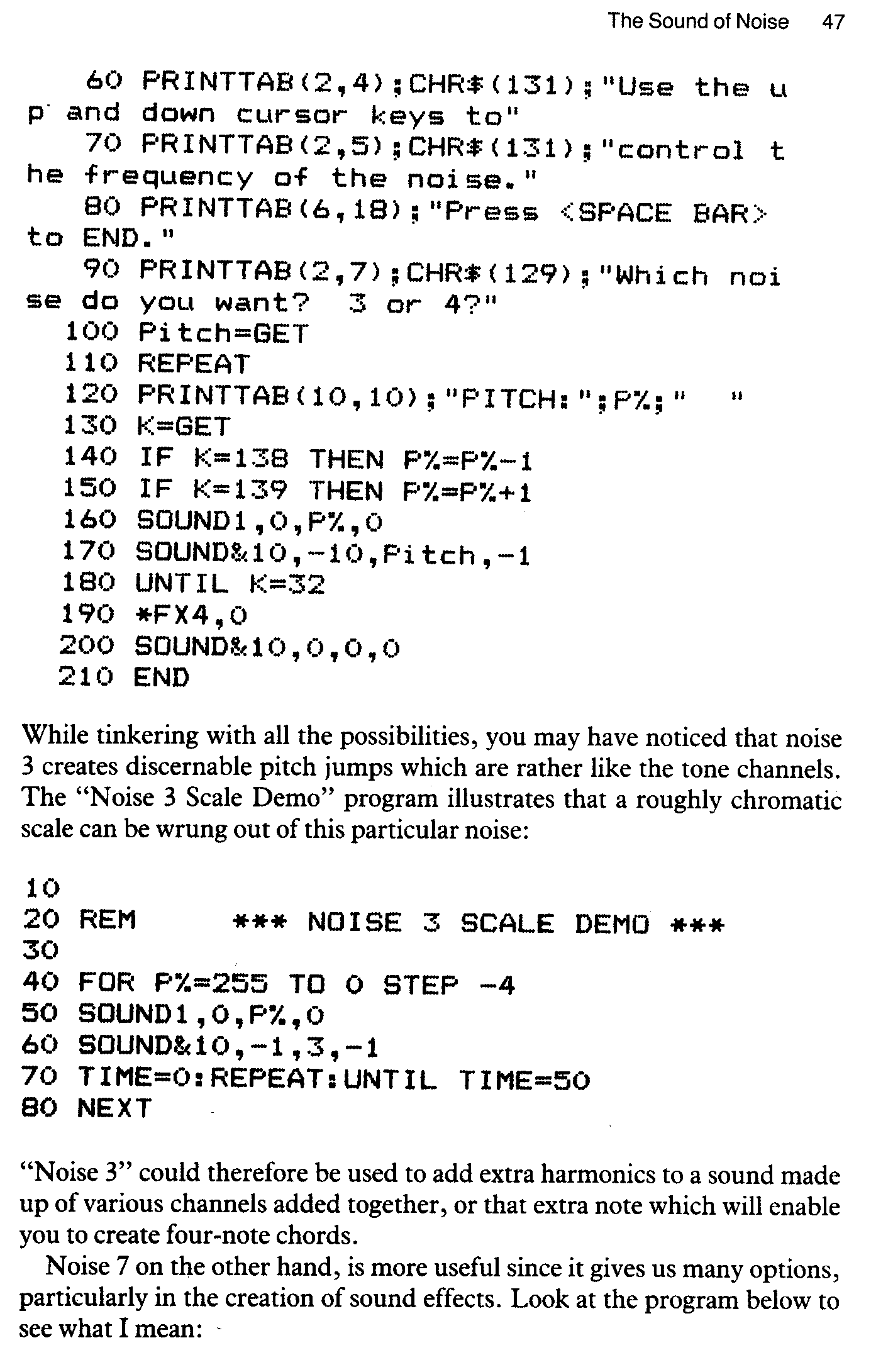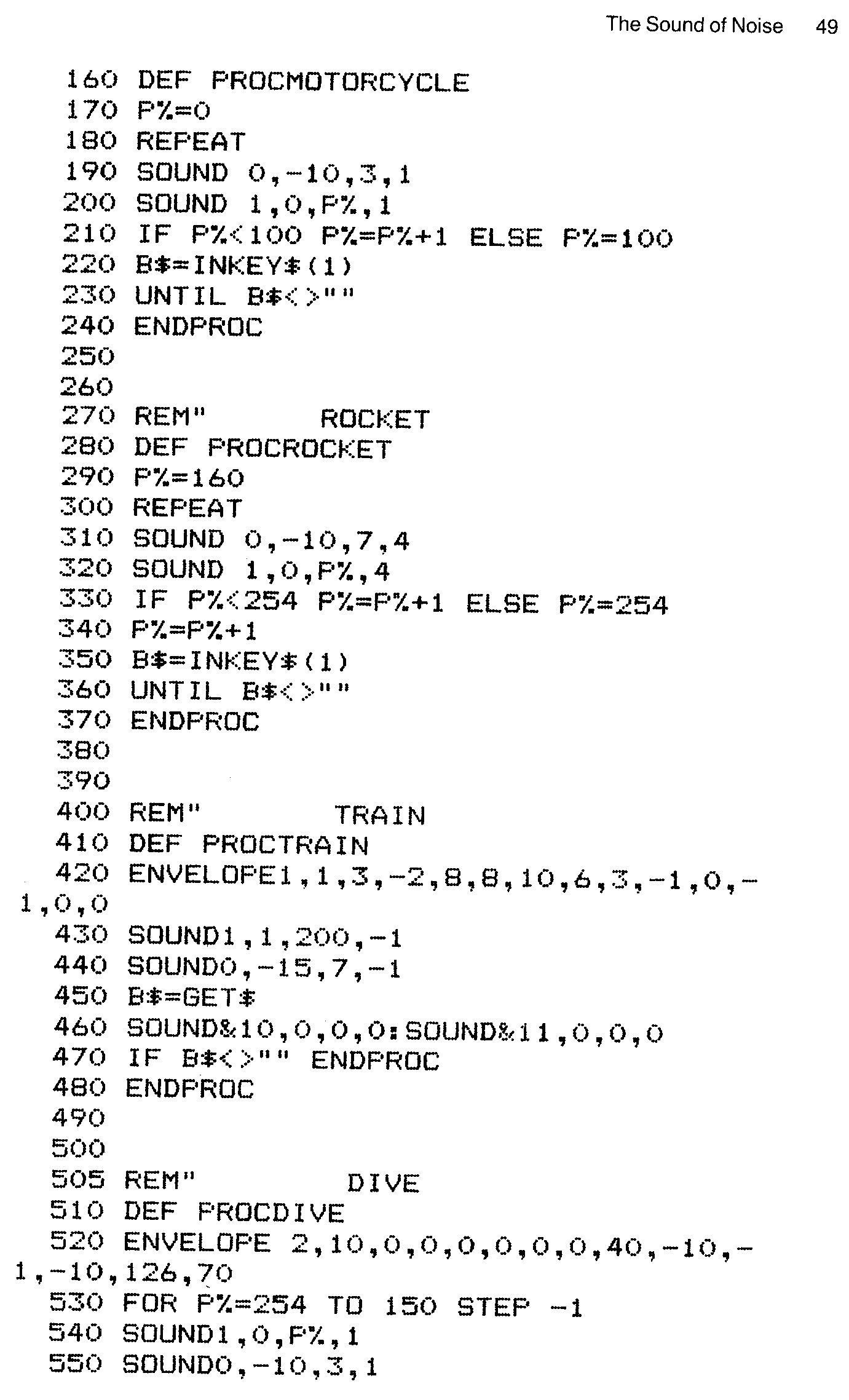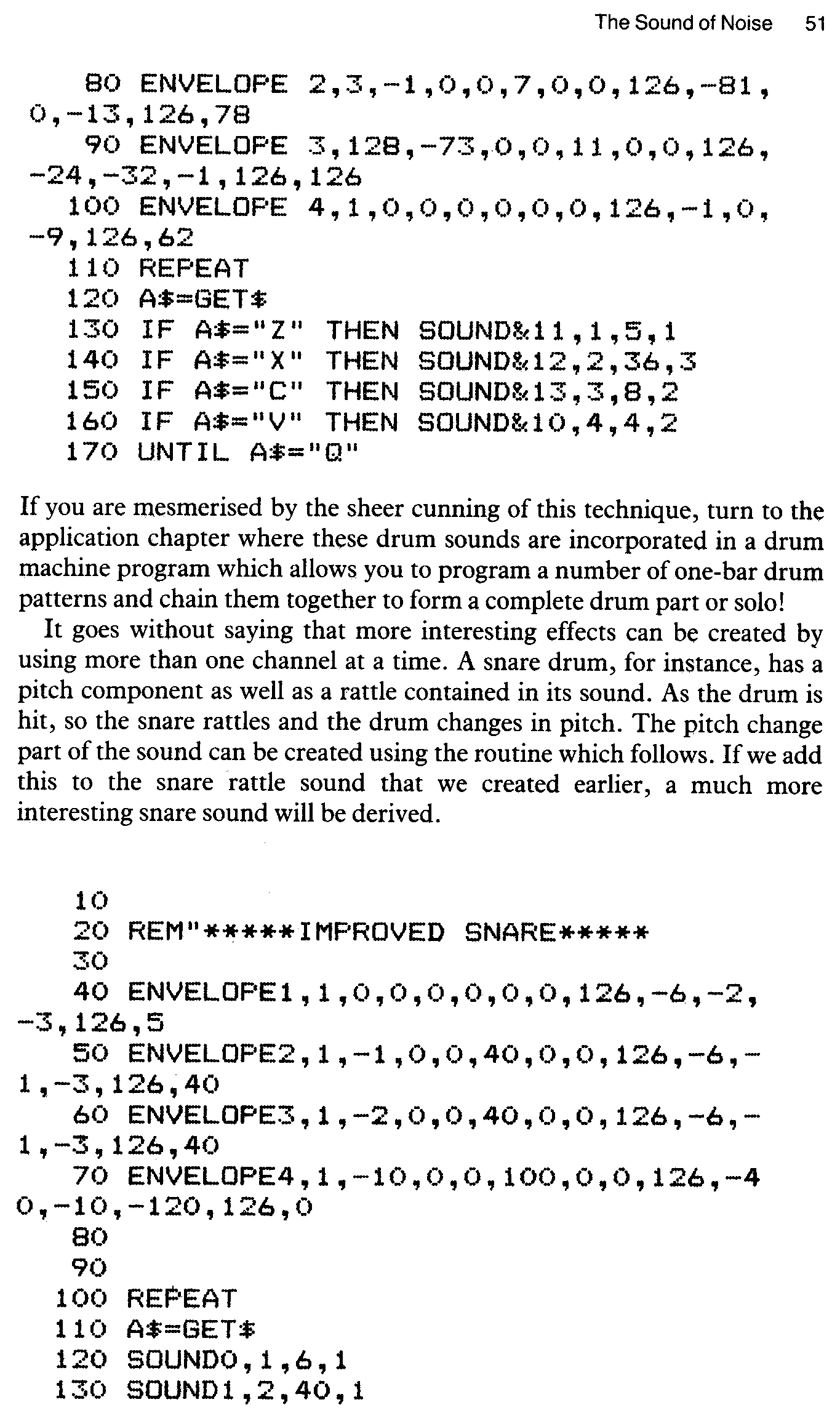BBC Micro Music Masterclass
Up until now we have been dealing exclusively with channel one, which produces what should by now be a familiar square wave tone. Both channel two and channel three produce identical sounds, and we will soon turn to look at how chords and tunes with accompaniment can be produced. In this chapter, however, we shall concentrate on the functions of channel zero, the noise channel.
Unlike the other channels, channel zero is incapable of producing melodies by varying the pitch parameter. In the case of channel zero the pitch parameter has an entirely different effect, being used to select one of eight possible noises. These can be described as in the table which follows:
0 High frequency sawtooth type tone 1 Medium frequency sawtooth type tone 2 Low frequency sawtooth type tone 3 Periodic noise of variable frequency 4 High frequency ‘white’ noise 5 Medium frequency ‘white’ noise 6 Low frequency ‘white’ noise 7 Random noise of variable frequency
Noises 0, 1 and 2 can be viewed as one group of noises. These are, in fact, strictly speaking tones rather than noises and have musical pitches of C in three octaves. It is not possible to vary these pitches, however, so you will find that the application of this group is to a large extent limited.
Noises 4, 5 and 6 make up another separate group, comprising three frequencies of white noise. The best way to describe white noise is to think of the sound a transistor radio gives out when it is not tuned to a station. White noise is versatile and has a whole range of applications, mostly in the sound effect area, as we shall see later on.
The final group is made up of pitch values 3 and 7. These can be thought of as ‘pitched noises’. The frequency of both these noises is directly related to the current frequency specified for channel one. Thus, for example, if pitch of channel one equals 0 both 3 and 7 give out clicking noises. The clicks from 3 appear regular, whereas 7 gives out random clicks which somewhat resemble the sound of a geiger counter.
If the pitch of channel one equals 200, noise three gives out a definite pitched note, whereas 7 gives a high-pitched white noise.
As practise clarifies matters much better than simply absorbing theory, of course, you ought to experience these sounds for yourself by running the following program. The program has been derived to play each noise in turn, as well as display its pitch value on the screen.








140 SOUND 2,3,80,2 150 SOUND 3, 4, 200, 1 160 UNTIL FALSE
In the previous example two sounds were played simultaneously simply by writing two SOUND statements for different channels. This method of layering sounds is perfectly acceptable for a large number of applications. Chords can be built up using this method, and providing only one chord is to be played all the notes will be sounded at approximately the same time. If, however, a string of chords is to be played or the sound is to be synchronised with graphics, another method must be found.
The BBC Micro comes to our aid at this juncture and supplies just such a method, which we shall look at in the chapter which follows.